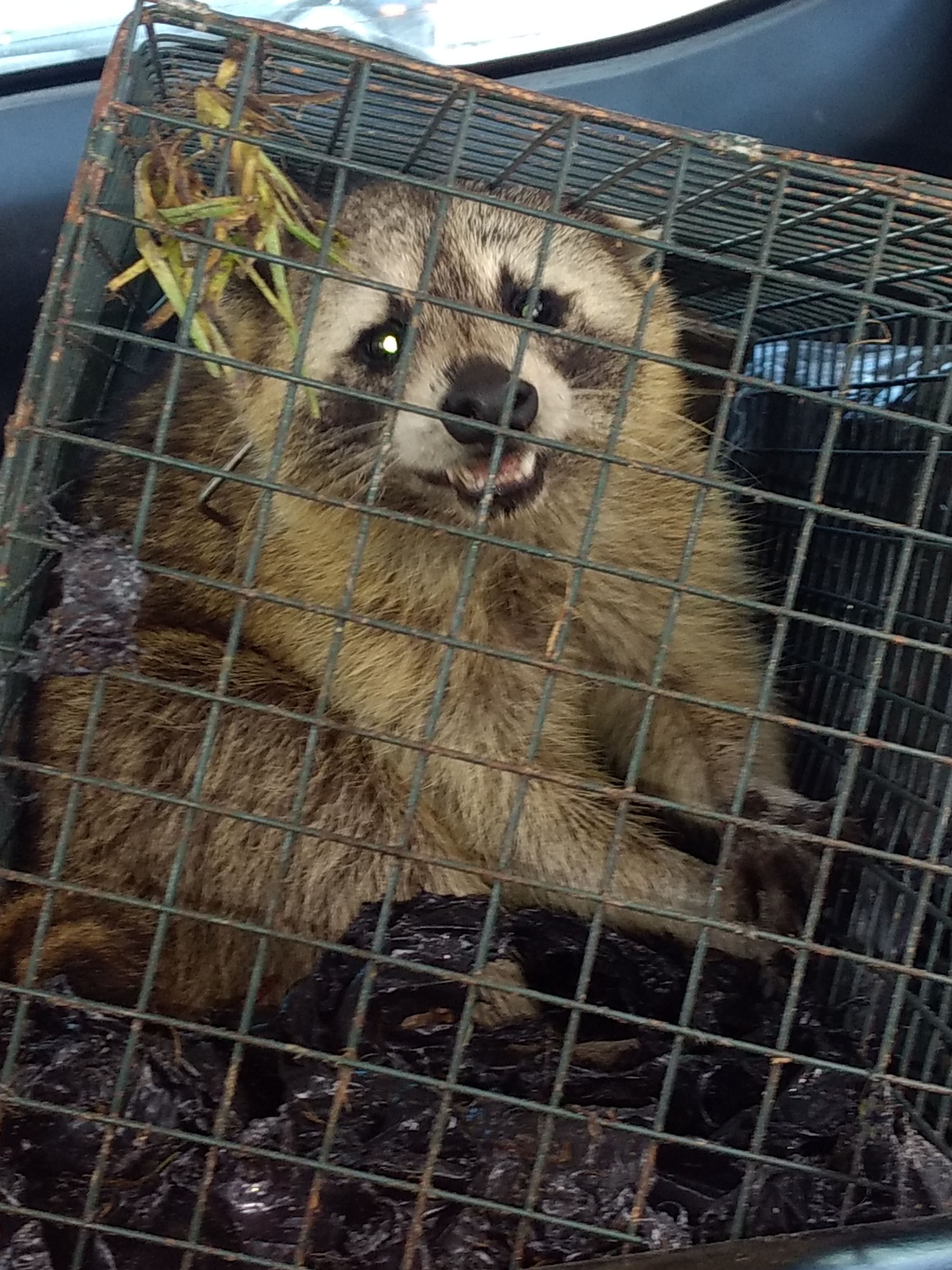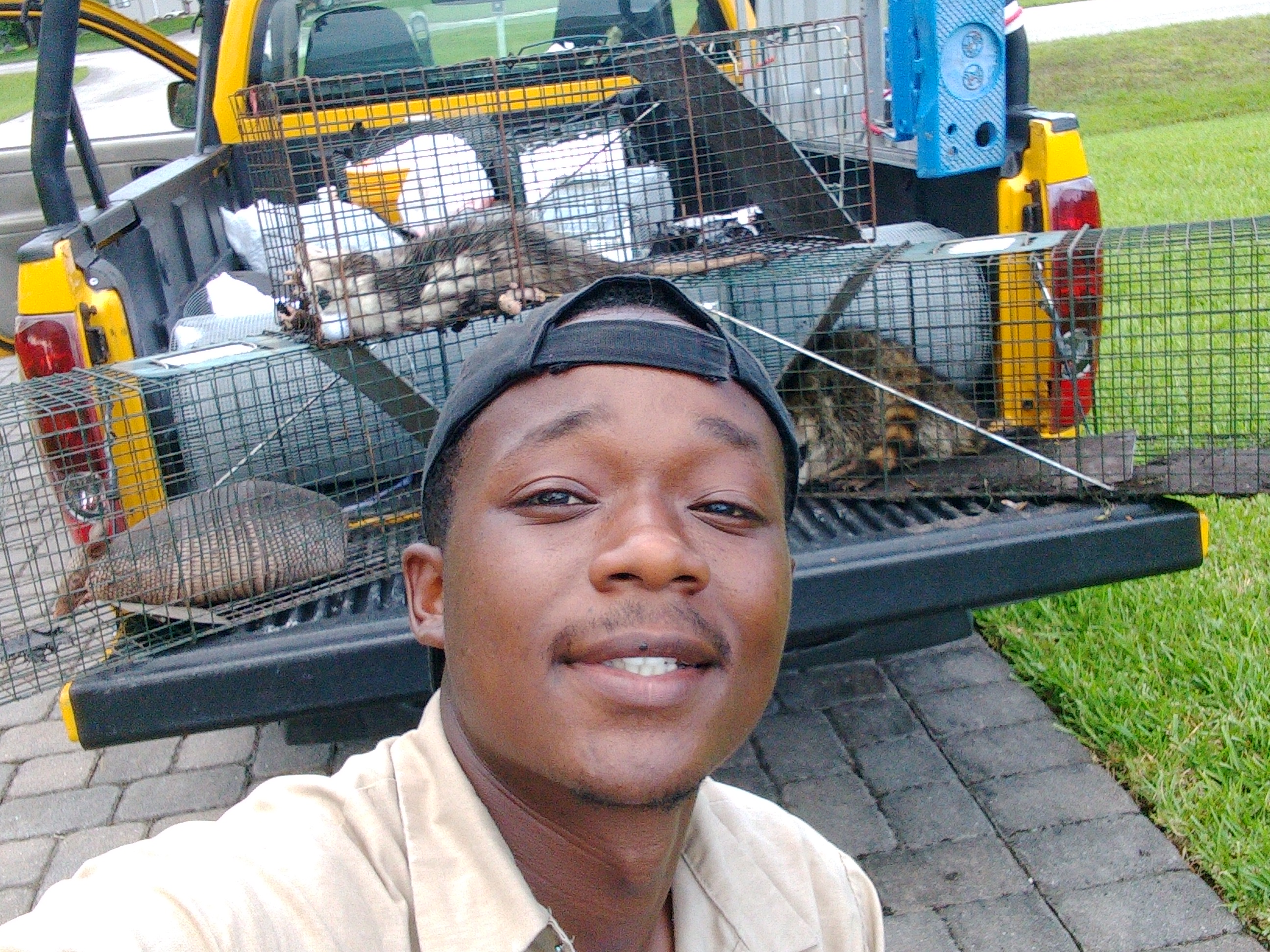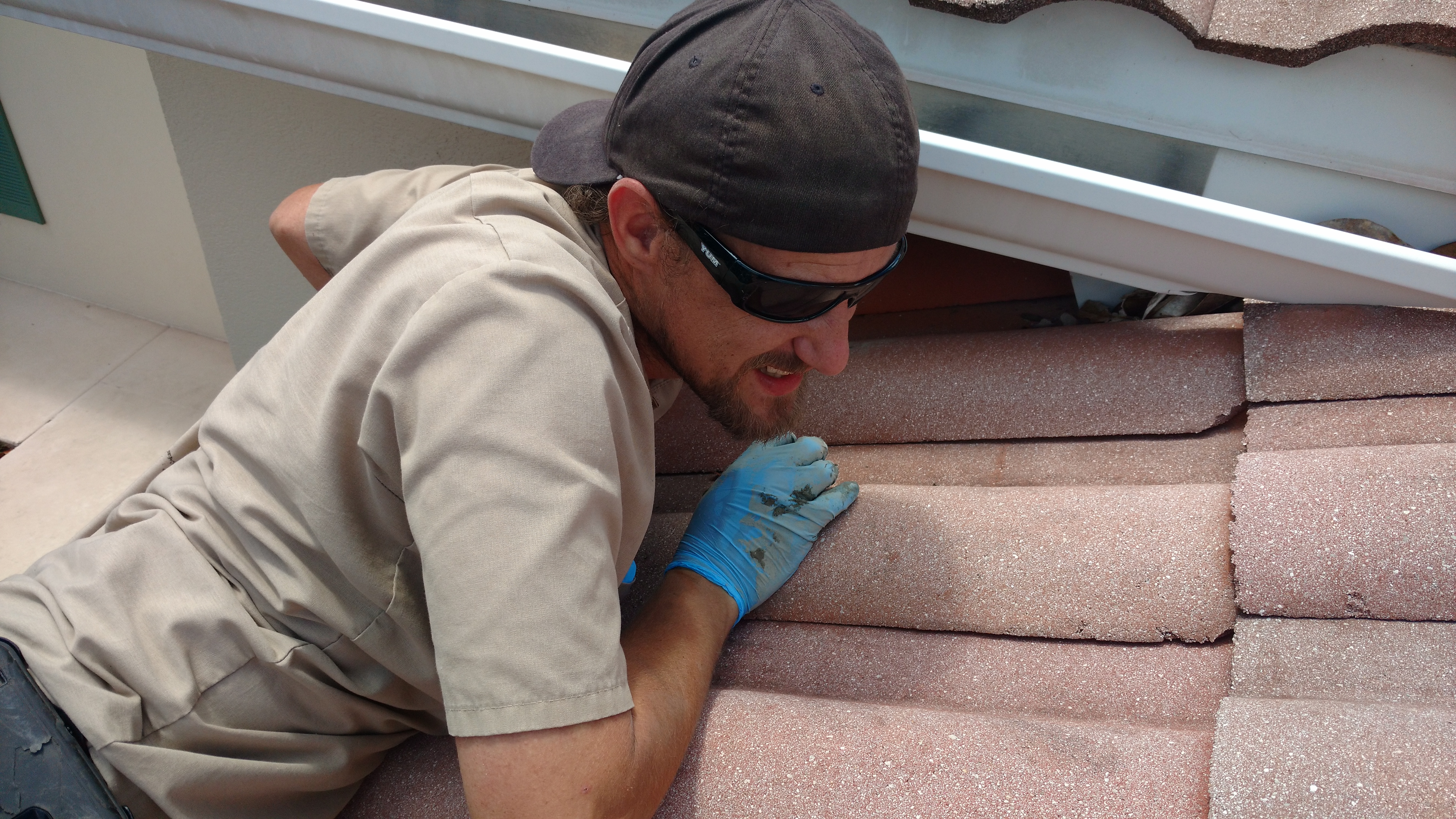
Several sorts of wild animals get within the attics of houses and buildings. Most commonly, individuals become aware of the situation when they hear sounds over the ceiling. The sort of sound you hear is really a great clue in determining which sort of animals you have living up there. Can you hear the sounds in the daytime, or the middle of the night? Is it loud, or delicate? Does this come from anywhere, or only 1 spot in the attic? I will analyze below each of the common wild creatures that enter attics, and explain the kinds of noises they make. I'll also describe other hints that you might have noticed, like the sort of entry hole the creature used to get in your property, and the sort of evidence that the animal leaves behind, in the shape of droppings, tracks, and other indications. Finally, I will examine the time of year, so you can best diagnose the creature that you know is up there, and handle the issue properly. Let's begin!
I will start with squirrels, which are the most common kind of critter, nationally, to invade attics.Squirrels are rodents, and specialist chewers. They chew their way in, and once inside, they frequently chew the wood and the electric wires.They love to live in hot, dry attics, which can be like a massive hollow tree to a squirrel. Most commonly, a squirrel in a attic is a mother squirrel who wants a safe place to give birth and raise her young. After a squirrel lives in a attic, it will return year after year to this safe harbor, and produce more damage every time.
Squirrels are most active in early morning and evening, before sunset. So that is when you will hear the most noises. If you hear sounds during any portion of the day, especially morning and evening, you have probably have squirrels. The noise is generally a fast scamper, rather than a heavy thumping. If it's only a mother squirrel, there is not much sound. But if there is four rambunctious juvenile squirrels up there, you will hear a great deal of noise! The sound can come from any area of the attic, but squirrels do tend to stick close to the entrance hole, near the edge of the roof. They can also be heard in the walls, scurrying up and down.

HOW THEY GOT INSIDE: Squirrels can fit in a fairly small gap, of not more than an inch and a half in diameter, but they generally chew the hole bigger for effortless access. If you find a good deal of chewing around the hole, it is likely squirrels. They can climb pretty much anything, so the entrance hole can be anywhere, including the bottom of the eaves. They will take advantage of openings in the structure, if gaps exist.
EVIDENCE LEFT BEHIND: Squirrels leave countless droppings in the attic, which seem like fat little brown grains of rice. They also leave nesting debris, like leaves and sticks. They leave paths all through the insulation, where they run around. They also chew on the wood and electric wires. The young are usually in born in early August, and they run all over the area in September, another high season for squirrels in the attic.

METHOD OF CONTROL: there are lots of control methods. First of all, absolutely no odor, like mothballs or ammonia, will cause them to leave, nor will ultrasonic sound emitters or strobe lights. These tactics are ruled fraudulent by the FTC, and they don't WORK. You must remove the animals or they won't ever leave the attic. Another method is to utilize one-way exclusion doors which let them leave the attic, but not get back in. This latter method requires a chew-proof home (or they will just chew their way back in) and no access to additional entry points. The entrance holes must be sealed after the squirrels are removed. In the end, it is worth it to inspect the attic for destruction, such as cable damage, and the attic ought to be cleaned of droppings and parasites, to avoid the potential spread of illness, and to eliminate the animal scent that may draw in animals to the home.
Raccoons are another of the most frequent kinds of creature to enter attics. Raccoons are inquisitive and mischievous creatures, and they're also expert climbers, and incredibly powerful. Raccoons have become a frequent nuisance wildlife species nationally, and they have learned to benefit from human influence - which means they eat from our garbage cans and dumpsters, steal pet food, and frequently break into houses and attics for shelter and food. Like all wildlife, they seek out a warm, humid place to live. Specifically, it is the female raccoons, when they are ready to give birth to young, who really seek a safe haven to have their infants. Thus, when you've got a raccoon in your attic, it is most commonly a mother raccoon with a litter of babies. Raccoons are naturally large creatures, with adults weighing up to 25 pounds (40 pounds up north), and they can cause a great deal of damage in a attic!
The majority of the noise you will hear will be at night, often shortly after sunset and shortly before sunrise, as the creature exits and re-enters the attic after its nightly foraging for food. They may also be present any time of the night, and they may also occasionally be active throughout the day. Raccoons are big, so the noises will often be loud, and seem more like heavy walking compared to mild scampering. Raccoons also make an assortment of vocal noises, and the baby raccoons, particularly, have a very distinct call. If you hear any vocal sounds, like chattering or growling, it is likely raccoons. Their entry points aren't subtle. They may tear a hole right through the shingles and roof, or they may tear out the soffit. They frequently benefit from easy openings, like poorly screened vents or eave gaps.

EVIDENCE LEFT BEHIND: Raccoons are large, so that they leave behind big evidence. Including large tracks and pathways through the insulating material, and massive droppings, such as that of a little dog. They also leave a whole lot of destruction, so in case you see ducts torn to shreds, for instance, it's likely raccoons.
TIME OF YEAR: Raccoons may live in a attic anytime of year, but it is most common for a female raccoon and young to go into the attic. However, as soon as the mother raccoon is living in the attic with her young, she and the young will remain for up to 8 weeks as she raises them. Then she kicks them from the territory and stays in your attic again for another litter. Raccoons in the southern US can have young anytime of year, but up north, it is typically in the spring.
Female raccoons will occasionally react to the odor of a male raccoon, as a threat to her babies. You must remove the animals or they won't ever leave the attic. The attic has to be searched for the baby raccoons, or you might wind up getting a major problem on your hands - hungry, squealing babies, which will die and rot and stink if they are not removed. The entrance holes must be sealed after the raccoons are removed, and sealed well, bolted down with steel. In the end, it is worth it to inspect the attic for damage, such as chewed cables, and the attic ought to be cleaned of droppings and parasites, to avoid the potential spread of illness, and to eliminate the scent that may draw in future animals into the house.

The most common critter to get into attics in many places, including where I work in Florida, is the rat. The Roof Rat is more prevalent in warm locations, and more likely to go into the attic. Norway Rats are inclined to adhere to the floor and the sewers and basements, in their stomping grounds . House Mice live anywhere, and they also commonly go inside attics. Therefore, they commonly live inside buildings, and as they don't like to be seen, they mostly reside in the walls and within the attic. They are busy year-round, and they are able to breed in very substantial numbers. Thus, rats in the attic can easily get out of control if not properly addressed.
TYPE & TIME OF NOISE: Light scurrying sound through the night, anywhere in the walls or attic. They sometimes sound extremely fast. If the acoustics are correct, they could sound much larger than they are.
HOW THEY GOT INSIDE: Rats can climb just about any surface. They can get anywhere they would like to go. They can squeeze through incredibly small holes and gaps. They could get in through the sewer pipes or any potential gap in a house, from the base to the tip of the roof. They are also able to chew. If a rat detects a little breeze coming from inside, they will get in.

EVIDENCE LEFT BEHIND: Rats leave a huge amount of droppings, sometimes tens of thousands of droppings in an attic - they seem like 1/3 inch brown thick grains of rice, much like squirrel droppings. They also leave tunnels and trailways in the insulation. They also leave chew marks, brown smudges from dirt inside their fur, and also these traces from the commonly travelled rat paths.
POISON IS A HORRIBLE IDEA FOR MANY MANY REASONS - toxin won't address the issue, and it will just create more problems. The only way to address a mouse or rat problem is to get every last point of entrance into the home, and seal it closed. Snap traps are actually the best means to do it.
This is among the more serious and complex issues within the business of nuisance wildlife control. Bat colonies wish to roost in a secure place - a cave, for instance. However, the attic of a house will do quite well. Roosts are often composed entirely of female athletes, and are known as a maternity colony. The females usually give birth to a single baby bat every summer. Therefore, the colony size basically doubles at dawn, and as soon as the baby bats begin to fly, you’ll see two times as many bats. Bats live a lengthy time, and they remain in exactly the same area year round, conditions permitting, or they migrate and return each summer. Thus, with time, bat colonies may grow to huge sizes. A fully infested bat attic is one of the most important and most challenging issues in the area of problem pest elimination.

TYPE & TIME OF NOISE: Bats are nocturnal, but they're pretty quiet in smallish numbers, and most individuals don't notice any sound. But a huge swarm of thousands of bats makes a hell of a ruckus, what with all the crawling and flying and squeaking of the entire bunch.
HOW THEY GOT INSIDE: Bats can squeeze through exceptionally smaller openings - 3/8 of an inch. They prefer to fly into houses at small architectural gaps close to the edge of the roofline.
EVIDENCE LEFT BEHIND: Though physical sightings of bats entering and exiting the construction are the best identifier, bats certainly make themselves known with the odor of the droppings, or guano. It may accumulate in huge quantities, contaminating an attic and possibly causing lung disease for those people in the home.

TYPE & TIME OF NOISE: Bats are nocturnal, but they're pretty quiet in smallish numbers, and most individuals don't notice any sound. But a huge swarm of thousands of bats makes a hell of a ruckus, what with all the crawling and flying and squeaking of the entire bunch.
TIME OF YEAR: If the attic is warm, year round. They migrate and return each spring. Many bat issues happen when the young start to crawl around and fly, and at times the inexperienced young crawl down into the home. This usually takes place in the month of August, that's the high season for bat control work.

TYPE & TIME OF NOISE: Bats are nocturnal, but they're pretty quiet in smallish numbers, and most individuals don't notice any sound. But a huge swarm of thousands of bats makes a hell of a ruckus, what with all the crawling and flying and squeaking of the entire bunch.
METHOD OF CONTROL: Mothballs or ammonia will not deter them nor will ultrasonic sound emitters or strobe lights. These tactics are ruled fraudulent by the FTC, and they don't WORK. The bats have to be taken out of the attic, and they're protected as colonies, so they shouldn't be killed. You don't need to kill a valuable bat anyway. The bats are often excluded through one-way exclusion devices. Sealing the building properly is vital to the procedure
Opossums are wonderful climbers, using their opposable thumbs, and they prefer to reside in a warm, dry, secure attic as much as any other critter. And as usual, female opossums seek a safe place to have their young, by instinct, so an opossum in a attic is generally a female with young. Fortunately with opossums, the young cling to her 24-7, so it's easy to eliminate all of them, without searching for another nest of baby animals. Opossums will also exhibit a exceptional behaviour of denning up throughout the winter. It’s not uncommon to see multiple adult opossums living together in one attic during winter. It is unusual, because possums aren't normally social animals. Once opossums get into a attic, they leave a big mess with their dog-sized turds, and they also often die in attics. The stench must be smelled to be believed.
HOW THEY GOT INSIDE: Possums usually just climb the home and enter a simple opening, like an uncovered soffit vent or open eave gap. They do not really force their way in. However they do require a relatively large gap.
EVIDENCE LEFT BEHIND: A huge amount of poop, basically! Opossums make tremendous turds, and a lot of them, and they leave them throughout the attic. The turds are easy to recognize, since they are large with frequently pointed tips.
TIME OF YEAR: Mainly in May and June, as mothers enter a attic to keep their young safe, and again in December & January, keep warm during the coldest winter months
METHOD OF CONTROL: Mothballs or ammonia will not make them nor will ultrasonic sound emitters or strobe lights. These tactics are ruled fraudulent by the FTC, and they don't WORK. Opossums are easy to trap, either out OR within the attic (inside trapping normally doesn't work on most creatures ), and the entry holes need to be sealed. If you wish to know how to eliminate animals in the attic, this is the proper method - trapping, removal, and sealing of entry points. Not too challenging, with possums.
Yes, snakes really do sometimes reside in attics. The snakes that do are of course climbing snakes, like Rat Snakes. These snakes are not venomous, but a lot of people don't like the concept of snakes living in their attic. And baby snakes, if born in the attic, will be everywhere! In most cases if there are snakes in a attic, there are also rodents in the attic - usually rats. Rats leave a very distinct odor, and snakes follow the rat paths up into the attic, to be able to catch prey. Because there's food, the snakes stay there. And snakes can fit into tiny spots, so that they can get to any place a rat could go. Needless to say, among the best ways to address a problem with snakes in the attic is to fix the rodent problem.
EVIDENCE LEFT BEHIND: Snake skins are the best indicator that you have snakes. TIME OF YEAR: Any time of year, though snakes are far more active in warmer weather.METHOD OF CONTROL: Mothballs or ammonia will not make them nor will ultrasonic sound emitters or strobe lights. The best bet is really to fix the rat problem and eliminate the odor that is bringing the snakes in the first place. And needless to say, seal shut any locations that either snakes or rats may use to enter the house.
One of the biggest problems with having animals reside in your attic is they poop and pee in your attic. Every creature does it naturally, and a lot will turn your attic into a sewer. The urine will soak in the insulating material, whereas the feces sits there.
Raccoon droppings, for instance, include the deadly-to-humans raccoon roundworm. Bat and bird droppings can grow the histoplasmosis spores which cause lung disease. There is at least a dozen major diseases related to Rat poop.
It is important to clean up the animal waste, for sanitary and health reasons, and since the scent can bring in new animals into your attic. Animals can cause a whole lot of damage when they reside in your house or attic. Some of the damage is not such a big deal - such as gnawing on wooden beams or scratching the insulation. And some damage is much more serious, like when rodents gnaw on PVC pipes, which may result in water leaks, or even worse, gnaw on electrical wires. Gnawed-upon cables might short out, causing a power outage in the house. However, the biggest threat is that the fire hazard due to electrical wires. Oftentimes the wires lay against wood or other flammable substances, and the rodents chew beyond the insulation coating and down into the aluminum core, and the heat from the cable against the timber can cause the house to catch on fire and burn down. So it is important, because of this, and lots of other reasons, to eliminate animals in the attic
I hope I have done a good job of showing you how you can identify which sort of critter problem you have, and the best way to eliminate animals in the attic. For the most part, it isn't a simple solution. You can not go out to Wal-Mart and purchase "rodent-be-gone" and scatter it around and anticipate your animal problem to go away. The animals have to be removed correctly, via trapping or exclusion, and also the entry points leading into the building and attic must be recognized and properly sealed, and the waste actually ought to be cleaned up and the damage in the attic repaired. Bear in mind, the repairs would be the most vital part of the process to get rid of critters in the attic.I strongly advise that you hire a professional pest control specialist with experience in managing animals in houses and buildings in case you've got a problem with creatures in the attic